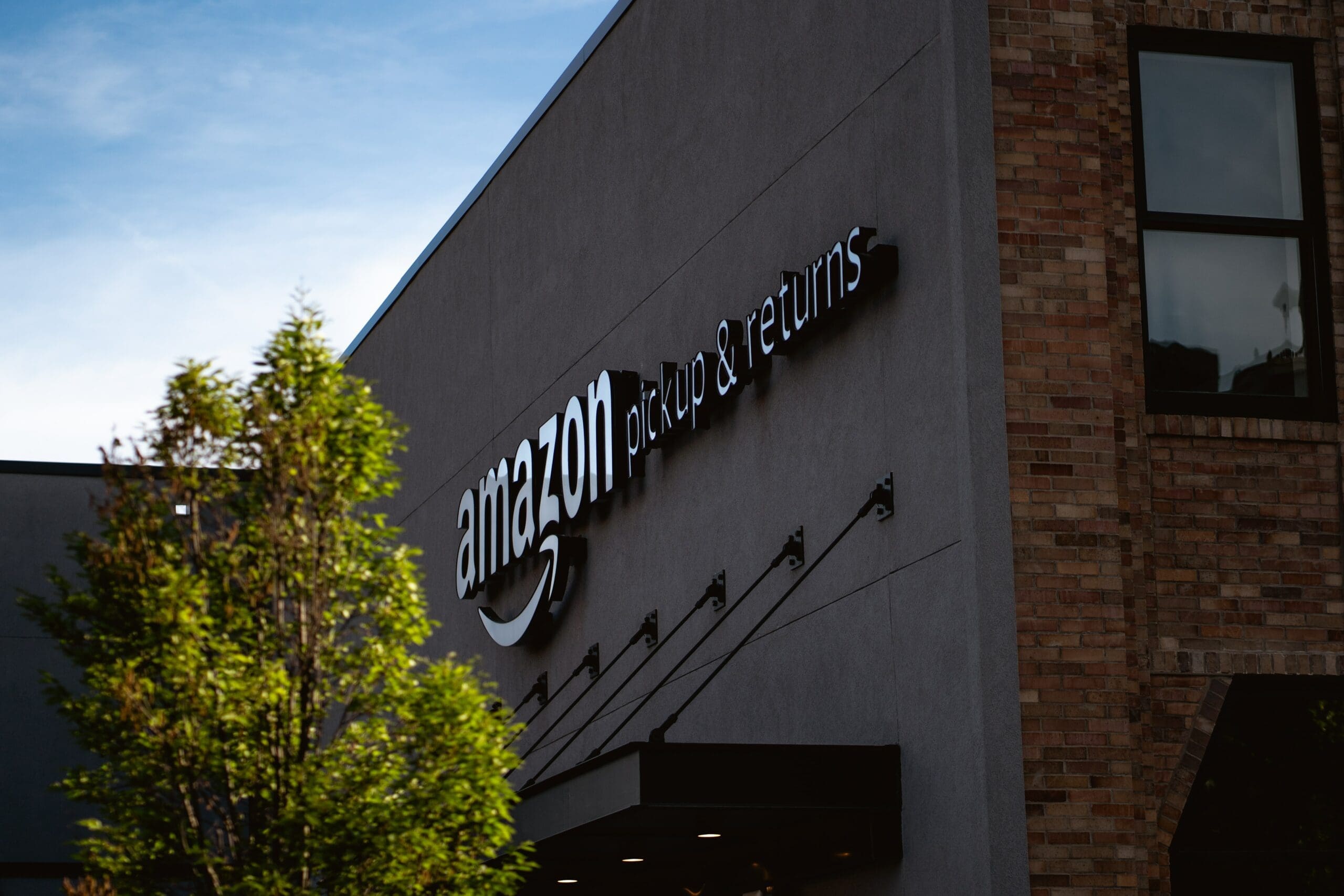Fulfillment by Amazon (FBA) a whole new fee structure in 2024. This guide contains everything you need to know about FBA fee increases so far in 2024 and the latest trends.
Since launching in 2006, Amazon’s Fulfillment by Amazon (FBA) program has expanded its ability to broker eCommerce, warehouse goods, pick and pack, and complete last-mile delivery to customers. Many emerging brands turn to Amazon as a must-have marketplace and leader in logistics. However, as FBA has expanded – and its services become more essential – FBA costs and fees have increased.
In fact, since shifting to a regional fulfillment model to improve Prime delivery speeds, FBA has become more complicated and in some cases, more expensive for third-party sellers. Beginning February 5, 2024, Amazon FBA will roll out major changes to their rate structure.
If you’re wondering how FBA rate changes will affect your Amazon fulfillment costs, this article is for you.
We’ll answer all of your questions about the cost of using FBA for Amazon fulfillment and whether you should consider changing your current fulfillment model.
How to calculate Amazon FBA Fees?
Does Amazon Fulfillment Include Shipping Costs?
Fulfillment By Amazon (FBA) vs. Other Amazon Fulfillment Options
What Amazon FBA Fees Increased in 2024?
Beyond Amazon FBA: Multichannel Sales Strategies
Additional Guidance On Amazon FBA & Shipping Options
How to Calculate Amazon FBA Fees?
To understand the full impact of FBA fees, it’s important to look at all the costs associated with selling on Amazon. They fall into three main categories.
1. Referral Fee
First and foremost, Amazon views itself as a broker between merchants and customers. For facilitating sales, Amazon charges a ‘referral fee’. In other words, Amazon is ‘referring’ business to brands who choose to sell online. When an Amazon customer purchases an item, the seller pays Amazon a percentage of the item’s total sales price. These percentages vary dramatically and are primarily determined by product category. See Amazon’s full list of referral fees here.
2. Monthly Storage Fee
Monthly storage fees with FBA vary depending on the size and type of product being warehoused in an Amazon fulfillment center. They also vary according to the time of year and can increase based on inventory performance. When calculating FBA storage fees, take the following factors into consideration:
- Amazon bases its fee structure on product size and category. Beginning in April, the size categories will be:
- Small Standard: Weighing up to 16oz and measuring up to 15in on the longest side
- Large Standard: Weighing up to 20lb and measuring up to 18in on the longest side
- Large Bulky: Weighing up to 50lb and measuring up to 59in on the longest side
- Extra Large Bulky: Weighing up to 50lbs and measuring greater than 59in on the longest side (with additional tiers for products weighing over 50lbs)
- Storage fees increase during Peak season
- Amazon will charge an aged inventory fee for products that stay in Amazon warehouses longer than 26 weeks (More on this when we cover changes rolling out in 2024)
3. Fulfillment Fee
Similar to warehousing costs, Amazon’s fulfillment fee is largely based on size and weight. Of note, fulfillment fees take dimensional (DIM) weight into account when calculating shipping fees. Depending on the size and weight of the package, the cost will be calculated based on whichever is greater: the actual weight of the package or its DIM weight (which is determined by multiplying the length, width, and height of the package). Using DIM weight is a standard practice across the shipping industry: adjusting for the cargo space required per unit of larger, lighter weight inventory even if it has the same actual weight of smaller inventory.
Of note, Amazon has added a new inventory placement fee in addition to its standard fees. Sellers can avoid this fee by inbounding products to multiple locations, but managing these inbounds becomes cumbersome with unpredictable pricing based on the LTL spot market.
We’ll cover more about inventory placement fees when we talk about Amazon FBA fee changes in 2024.
Does Amazon Fulfillment Include Shipping Costs?
In short, the answer to if FBA includes shipping is yes. However, it is important to understand a little more about how Amazon fulfillment works.
With FBA, merchants ship products to Amazon warehouses, where Amazon then takes on the responsibility of fulfilling orders- all under Amazon’s guarantee of 1- to 2-day shipping. Once inventory arrives at an Amazon fulfillment center, Amazon handles the entire fulfillment process from packaging, labeling, pick and pack, and delivery.
So, as an Amazon seller, merchants do not pay for shipping alone. Rather, all of Amazon’s services are wrapped in one ‘fulfillment fee’. These fulfillment fees are broken down by size tiers, taking DIM weight into account.
FBA Shipping Costs vs. Other Amazon Fulfillment Options
While Fulfillment by Amazon (FBA) may be the first stop for many Amazon sellers, there are options:
- Fulfillment By Amazon (FBA): The most “full service” option from Amazon, with Amazon handling each step of fulfillment and managing customer service.
- Fulfillment By Merchant (FBM): With FBM, sellers are in charge of storing their own inventory in Amazon’s fulfillment centers. When orders come in, Amazon handles the processing and shipping to customers. However, those who choose FBM drop the Amazon Prime badge.
- Seller Fulfilled Prime (SFP): This fulfillment solution requires that merchants pass Amazon’s evaluation process and meet stringent requirements, including shipping accuracy and 1- to 2-day shipping in order to qualify for the program. Once deemed a qualified seller, SFP merchants maintain an Amazon Prime badge.
Let’s take a closer look at how these programs work, along with important details for making the right decision:

Fulfillment By Amazon (FBA) pricing is usually more competitive for small, lightweight products or for merchants who only sell on Amazon. However, if any of the following factors are important to your brand growth, you may want to consider an FBA alternative:
- More control over brand packaging
- A more direct customer management program
- Are interested in multi-channel selling (using multiple eCommerce marketplaces)
- FBA fees are eroding margins due to the size or category of your product
What Amazon FBA Fees Increased in 2024?
Once again, Amazon FBA is changing its fee structure in 2024, and this newest set of fees may be the most complicated yet. Amazon is rolling out the changes in multiple phases.
- February 5
- Size tiers will be adjusted: Oversize replaced by large bulky and extra large
- Ships in Product Packaging (SIPP) discount rolled out
- March 1
- Inbound placement fee: sellers will either pay extra for Amazon to distribute their inventory for Prime delivery or be tasked with inbounding to and maintaining proper inventory levels multiple facilities on their own
- Fees range between $0.26 and $5.53 depending on product size
- April 1
- Low inventory level fee: FBA has long penalized sellers for overstocking inventory, but will now add a penalty for carrying too little inventory. Sellers will have to balance inbound schedules perfectly to avoid racking up fees on either side of the equation.
- Aged inventory fee: Products stored in Amazon warehouses will for more than 26 weeks will pay an additional $0.23 to $1.88 per cubic foot per month
- April 15
- Amazon referral fees will be reduced at varying rates depending on product size and category
Understanding the bottom-line impact of these changes will be challenging at best, and with a phased roll-out, it could take the better part of the year to fully understand the impact on margin at a SKU-level. Now more than ever, it’s clear that there is no one size fits all Amazon fulfillment solution for any Amazon seller. The key to protecting margins and customer experience is choosing the right fulfillment model on a SKU-by-SKU basis.
Not sure which Amazon fulfillment strategy best suits your business? Book a free consultation with an Amazon fulfillment expert today.
Beyond Amazon FBA: Multichannel Sales Strategies
Merchants can sell on Amazon without FBA– but is it really a good idea?
While Amazon FBA gives merchants peace of mind across their logistics, the fees – along with less control – may be more costly in the long run. However, mid-sized brands can still tap into a Fulfillment By Merchant option, which can then qualify as a Seller-Fulfilled Prime and earn the Amazon Prime badge.
With or without a Prime badge, merchants are seeing the benefits of outsourcing their warehousing and fulfillment to tech-driven 3PLs (also known as 4PLs). This gives fast-growing businesses more autonomy, while still maintaining key benefits such as:
- Fast and free 1- to 2-day shipping for customers
- Brand control
- Inventory control
- Streamlined fulfillment
With the right 3PL, merchants can unify their entire eCommerce program to create a multichannel sales strategy. It is now possible for merchants to have a 360 degree view of their entire eCommerce business on multiple marketplaces like Amazon, Google Shopping, Facebook Marketplace, and Walmart Marketplace. This multichannel sales approach is becoming standard, with 99% of small businesses reporting they sell on one or more other online marketplace besides Amazon.



